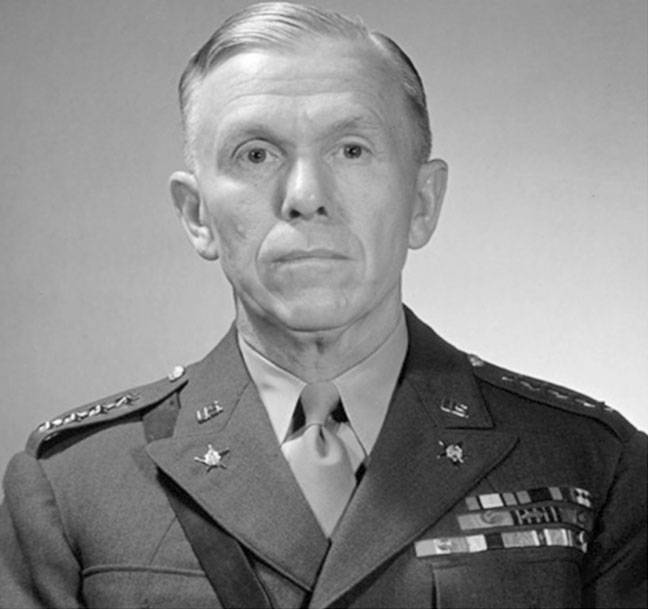“The people of this country [the United States] are distant from the troubled areas of the earth and it is hard for them to comprehend the plight and consequent reactions of the long-suffering peoples, and the effect of those reactions on their governments in connection with our efforts to promote peace in the world.”
–George C. Marshall
The European Recovery Program is
generally known as the Marshall Plan
named after its architect.
The uneasy partners in World War II, i.e., the then Soviet Union and the United States of America were poles apart primarily because of the ideologies that were driving the two countries. Whereas the former believed in communism, the latter was an ardent champion of capitalism. Nevertheless, the urgencies of WWII brought the two states closer, but at the end of the war, the two countries became suspicious of one another’s intentions.
Since the WWII left the European countries in ruins, the US feared that if it did not come to the aid of the countries in Europe in general and Western Europe in particular, these countries would kowtow to the Soviet Union. Thus the Marshall Plan –officially known as the European Recovery Program– was brought into action. Under the plan, the US channelled over $13 billion to finance the economic recovery of Europe between 1948-51. Though the American public viewed the plan as a generous subvention to Europe, the Soviet Union, however, perceived it as interference in the internal affairs of other states.
One interesting fact that rarely finds a mention in the dominant academic narrative is the total death toll of the Soviets in the WWII. While the world is determined not to forget the six million Jews killed in the war, our collective memory has not evolved any space for 27 million people of the then Soviet Union who were instrumental in halting the advances of Hitler.






